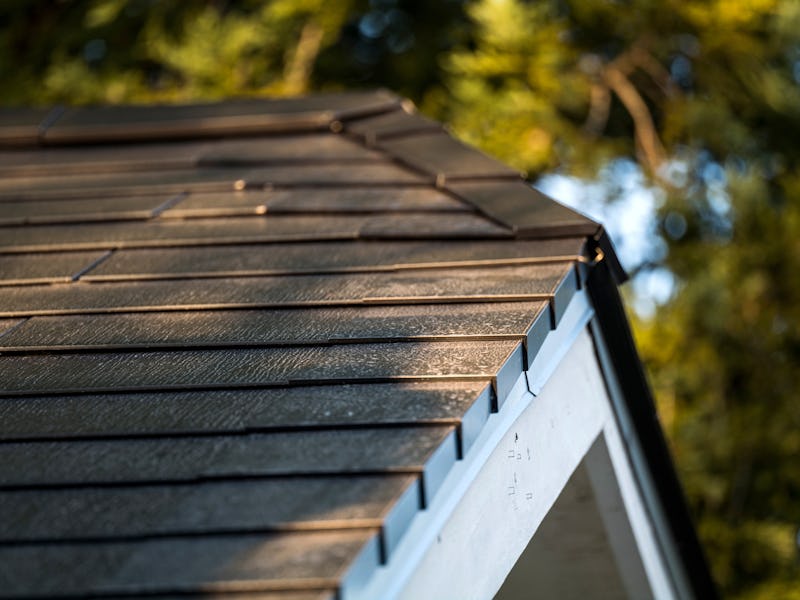Tesla Solar Roof may finally reach more homes after production win
The automaker's solar business saw a busy week.

Tesla's New York factory produced enough solar roof tiles last week to cover 1,000 homes, the company announced Sunday. The milestone makes good on a goal outlined by CEO Elon Musk in October 2019.
The company produced four megawatts worth of panels last week. That suggests the company is assuming each home would use around four kilowatts of panels. Previous installs, however, have reached nearly 10 kilowatts in size. Tesla's solar retrofit website, where it offers panels either for sale or rental on existing homes, lists a 3.8-kilowatt installation as a "small" system, running through four sizes to "extra large" at 15.12 kilowatts.
The solar roof figures.
Tesla has generated a lot of media interest in its solar roof, which switches out a traditional roof with tiles that collect energy themselves. This was first unveiled in October 2016, but installations were slow after a few materialized in the spring of 2018. Reuters reported in May 2018 that just 12 roofs had gone live. The tiles were designed to blend in to look like a normal roof to the untrained eye.
The "Giga New York" factory, located in Buffalo, was where Tesla produced solar roof tiles in collaboration with Panasonic. Nikkei reported, however, that Panasonic struggled to meet Tesla's goals for design, efficiency and cost. Last month the latter firm announced it would withdraw from the agreement, halting its operations by May of this year and withdrawing completely by September. Panasonic is expected to remain a partner at Giga Nevada, where it produces battery cells, but Tesla has also made suggestions it would like to vertically integrate production in this area too.
The solar roof on a house.
In October 2019, Tesla switched to a new third-generation set of tiles. These tiles are provided by a Chinese supplier, with a tweaked design aimed at faster installs. Musk stated during the announcement that he planned to partner with third parties to install the roof. Electrek reported this week that the first suppliers have already been certified. Musk announced at the unveiling that he had a goal of producing 1,000 roofs per week by the end of 2019.
While the solar roof is visually impressive, Musk has been keen to stress that the roof only makes financial sense if the buyer is planning to replace the roof anyway. In August 2019, Tesla unveiled a new solar retrofit pricing scheme where buyers could rent panels for their roof at a monthly rate. The goal is to encourage buyers to make the switch by demonstrating the value versus current electricity bills.
Musk now plans to sell the solar roof internationally. On Twitter, he explained that Giga New York would initially produce panels for the world, but over time expansion would move closer to consumers in a similar fashion to Tesla vehicles.
The Inverse analysis
The ramp-up could finally bring the roof to more homes.
Tesla's solar efforts have at times struggled to make their expected impact. In March 2019, Musk explained that the company wanted to increase solar roof production, but the Model 3 sedan was ramping up production and the company needed as many battery cells as possible.
The solar roof is eye-catching and tell a compelling story, but they're still on relatively few roofs. Beyond expanded production, one key change will be reaching faster installation times. Musk has stated before that he's aiming for eight-hour installations. Contracts in California currently suggest the installation will be finished around seven to 21 days from the start.
Time (and the unfolding nature of the coronavirus crisis) will tell whether its new manufacturing partner, contracts with third-party installers, and international expansion will help the sun shine on the company's solar business.